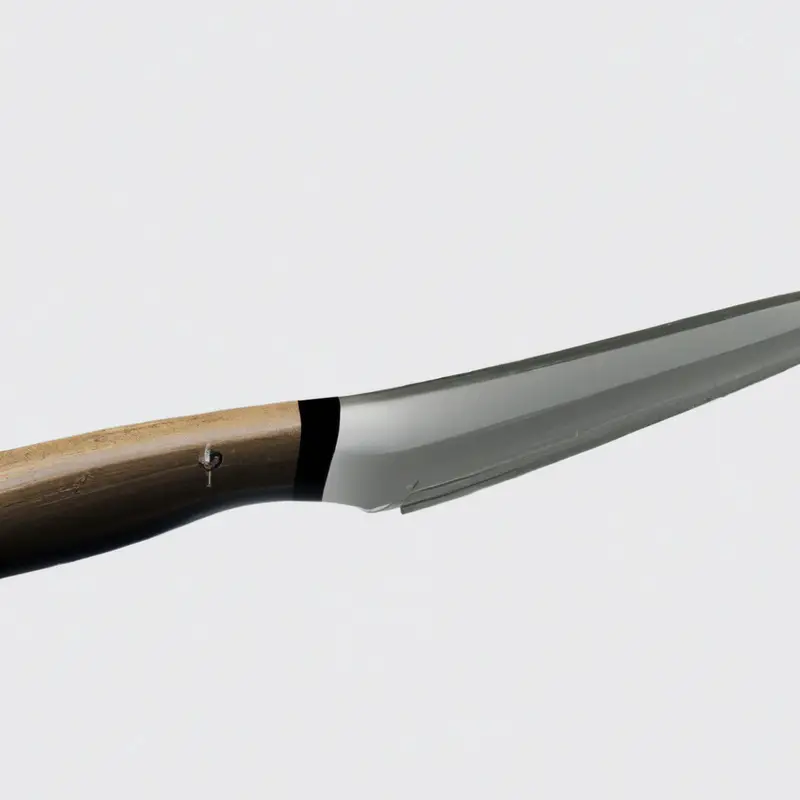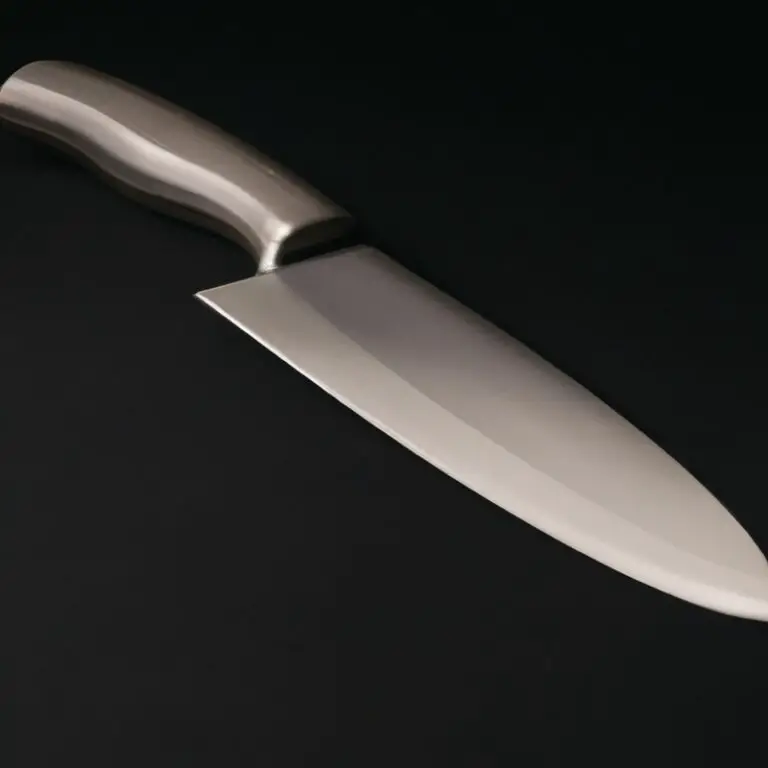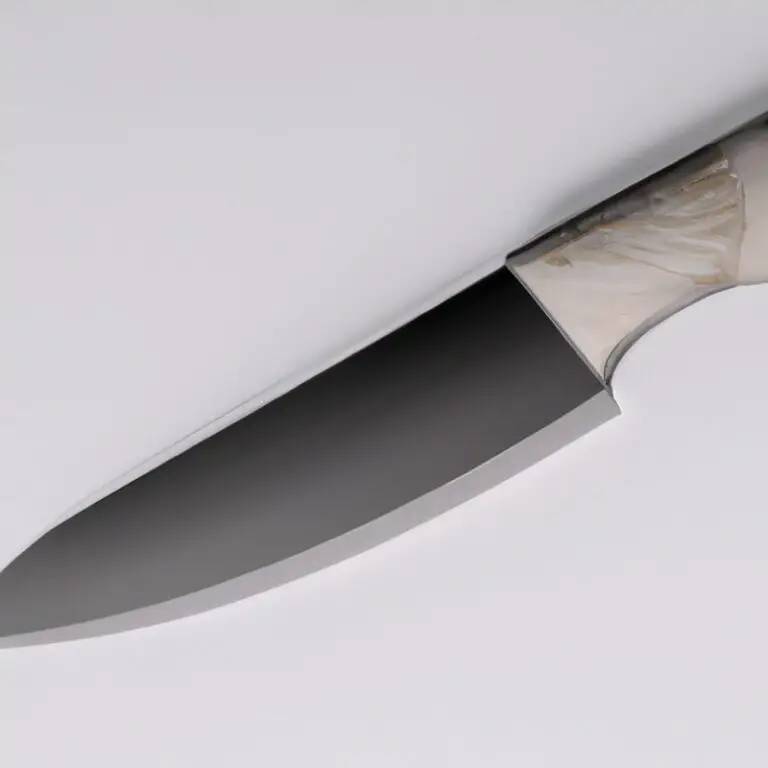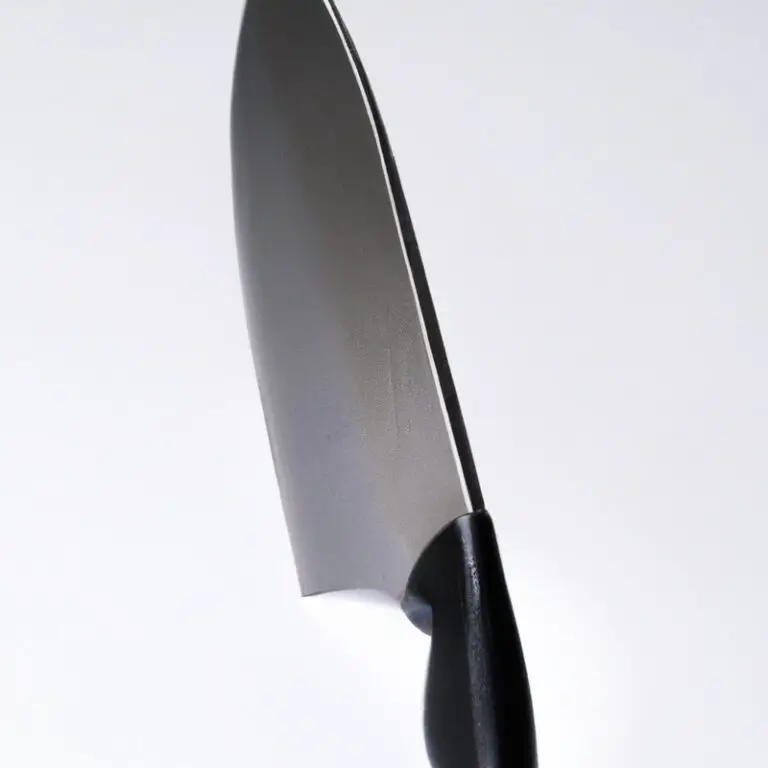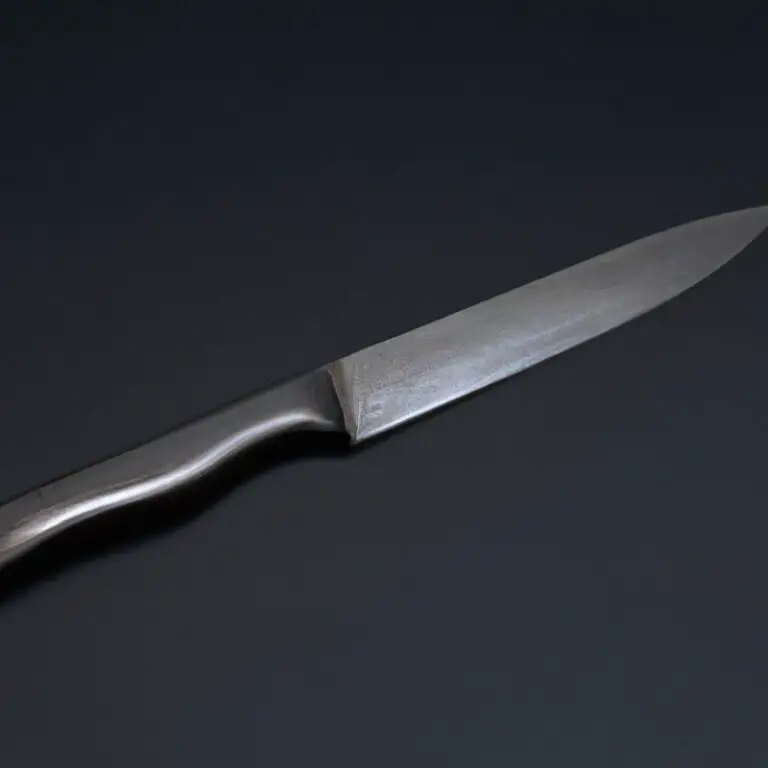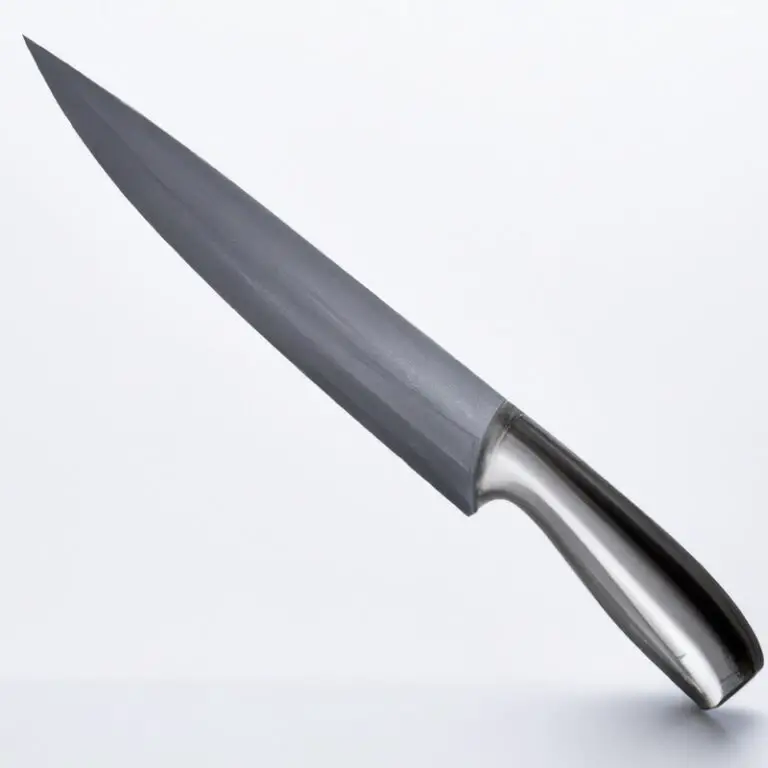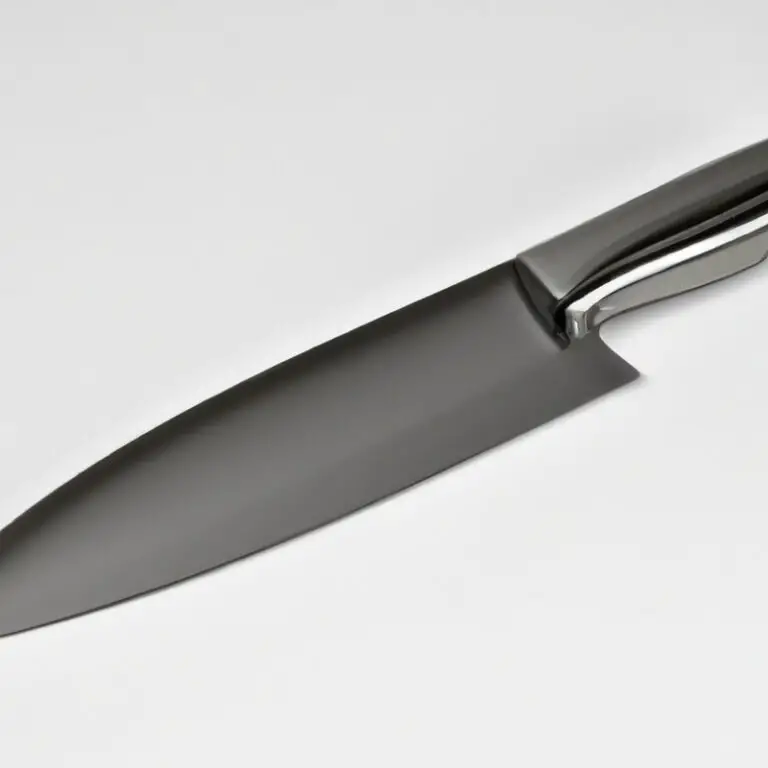How To Properly Hold a Santoku Knife? Master It!
Key Takeaways:
- Proper Santoku knife grip involves a pinch grip on the blade, with your index finger and thumb holding the base of the blade, and the other 3 fingers resting on the handle.
- Ensure your grip is firm, but not too tight, allowing for precision and control while cutting.
- Always angle the knife at a 45-degree angle to the cutting board while slicing, and use a rocking motion to ensure even cuts.
- Regularly hone and sharpen your Santoku knife to maintain its sharpness and maximize its performance.
Do you struggle with properly holding your Santoku knife? As a culinary enthusiast, it’s crucial to master the correct grip and hand positioning to prevent accidents and ensure accurate cutting.
The Santoku knife, with its unique anatomy and purpose, requires a particular technique that goes beyond the traditional pinch grip.
In this article, we will cover everything you need to know about holding a Santoku knife. From the importance of a proper grip to avoiding common mistakes, we will guide you towards improving your cutting skills and elevating your culinary experience.
So let’s get started!
| Left Hand | Right Hand | |
| Thumb Placement | On top of the handle | Wrap around the handle |
| Index Finger | Along the back of the blade | On the bolster for support |
| Middle Finger | Curled around the handle | Curled around the handle |
| Ring Finger | Curled around the handle | Curled around the handle |
| Pinky Finger | Touching the cutting board | Touching the handle |
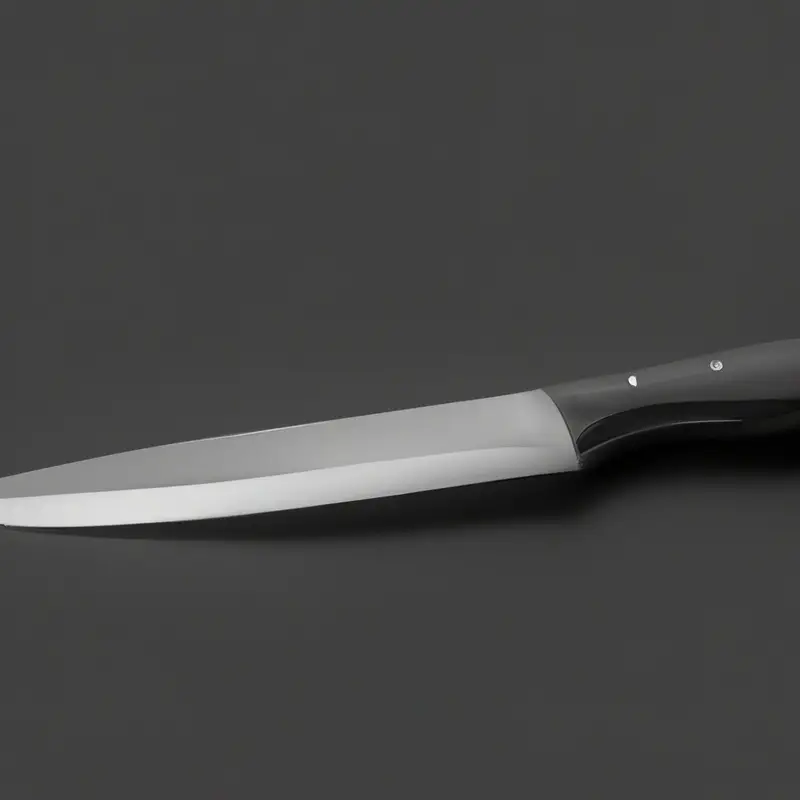
Understanding the anatomy of a Santoku knife
The Santoku knife is a versatile kitchen tool with a distinct shape and composition. It typically has a shorter blade than a traditional Western chef’s knife, a flat edge, and a rounded tip.
The blade is also wider, which allows for easier chopping and slicing.
The handle is usually made of wood or synthetic material, and it is comfortable to hold for extended periods. The blade is made of high-carbon stainless steel, which makes it durable, sharp, and resistant to rust.
It usually has a full tang, meaning the metal extends all the way through the handle, providing balance and stability.
The spine of the knife is thicker at the handle end and tapers to a thinner edge near the tip. This distinctive design helps with precision cutting and minimizes the force required to slice through food.
The blade’s shape and structure also prevent most food from sticking to it, making it easy to clean and maintain.
In summary, understanding the anatomy of a Santoku knife is essential to mastering its usage and taking proper care of it. Its unique shape and composition provide superior cutting abilities, making it a valuable kitchen tool.
Purpose of using a Santoku knife
The purpose of using a Santoku knife is to make precise and efficient cuts on various ingredients. It is designed to be a versatile kitchen knife that can chop, slice, and dice vegetables, meat, and fish with ease.
The word “Santoku” translates to “three virtues” in Japanese, referring to its ability to handle three primary tasks – slicing, dicing, and mincing.
Compared to other knives, the Santoku blade is shorter and wider, providing better control and a lower risk of injury. Its subtle, slightly rounded tip makes it ideal for precise cutting and slicing.
The hollow edge (granton edge) prevents food from sticking to the blade, ensuring easy and fast chopping.
In summary, the Santoku knife’s purpose is to provide a versatile, efficient, and safe cutting experience in the kitchen.
Importance of a proper grip while holding a Santoku knife
A proper grip while holding a Santoku knife is essential to ensure safety and accuracy while cutting. The grip determines how much control you have over the blade and how efficiently you can slice through ingredients.
A good grip allows you to maintain stability and balance, reducing the risk of injuries.
The pinch grip technique is highly recommended for Santoku knives, as it provides maximum control and accuracy. It involves placing your index finger and thumb on the blade and wrapping the remaining fingers securely around the handle.
Other grip techniques, such as the handle grip and the blade grip, can also be used but may not provide the same level of control as the pinch grip.
Mastering the grip technique is crucial for anyone who wants to achieve precision and ease of use when using a Santoku knife.
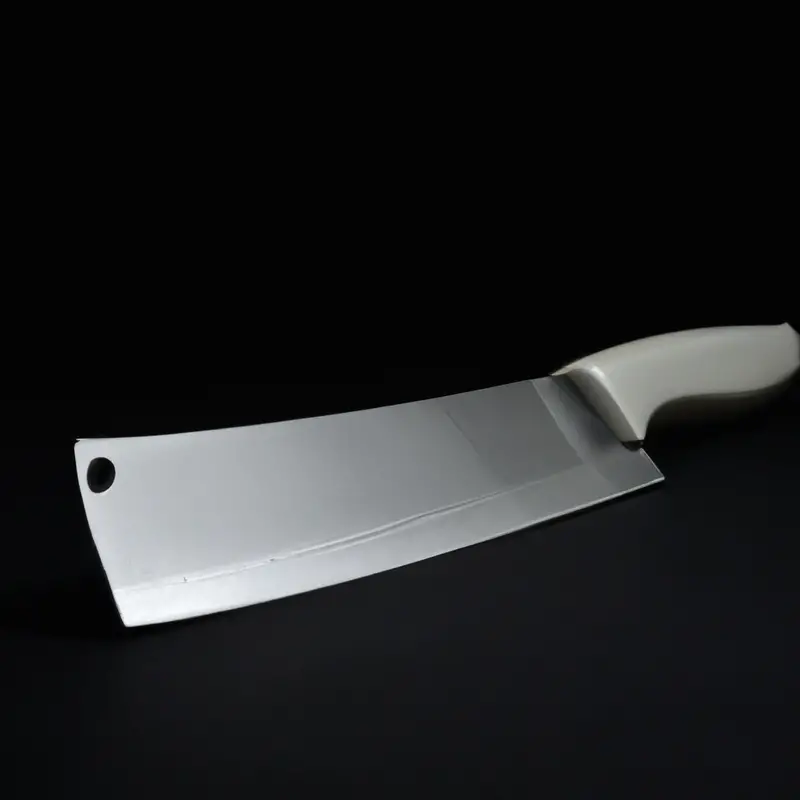
Mastering the pinch grip technique for Santoku knives
Mastering the pinch grip technique is essential for using a Santoku knife efficiently and safely. To achieve this grip, position your thumb and index finger at the bottom of the blade, with your other fingers curled around the handle.
Keep your grip firm but not tight, and make sure your wrist and forearm maintain a straight line to prevent strain.
With the pinch grip, you have control over the blade’s movement, allowing for precision and accuracy in cutting. Practice this grip until it feels natural, and remember to keep your fingers out of harm’s way while cutting.
Other grip techniques for Santoku knives
Apart from the pinch grip, there are other common grip techniques for holding a Santoku knife: the handle grip and the hybrid grip. The handle grip involves wrapping all four fingers around the handle and holding the knife with a closed fist.
It’s a good grip for heavy-duty tasks like chopping through hard vegetables or meat, but it offers less control and precision compared to the pinch grip.
The hybrid grip combines elements of both the pinch and handle grip. It involves placing the thumb and first two fingers on the blade while wrapping the remaining two fingers around the handle.
The hybrid grip is ideal for tasks that require both power and precision, such as cutting through thicker foods or working with larger portions of meat.
While it’s good to know these alternative grip techniques for Santoku knives, it’s worth remembering that the pinch grip is still the most versatile and efficient grip for most tasks.
Correct hand positioning while using Santoku knives
When holding a Santoku knife, the key is to position your hand correctly. The grip placement can affect your ability to cut effectively and safely.
To properly hold a Santoku knife, place your index finger and thumb on either side of the blade’s base.
Curl your other fingers around the handle for additional support. This results in a pinch grip that ensures greater control while chopping or slicing through food items.
Avoid gripping the handle too tightly or holding it too far back, as this can cause the blade to become unstable during the cutting process.
Remember to maintain a relaxed but firm grip while using the Santoku knife to reduce wrist fatigue and enhance precision.
How to maintain a firm but relaxed grip on a Santoku knife
To maintain a firm but relaxed grip on a Santoku knife, start by placing your index finger and thumb on either side of the blade’s base, just above the handle. This technique, called the pinch grip, provides stability and control while cutting.
Next, wrap your remaining fingers around the handle, making sure not to grip too tightly.
Squeezing the handle too hard can cause hand fatigue and increase the risk of injury. To ensure a comfortable and secure grip, adjust your hand position as needed while cutting.
This may involve sliding your fingers up or down the handle to accommodate different cutting tasks.
It’s also important to maintain proper body posture while using a Santoku knife. Stand with your feet shoulder-width apart, and keep your non-dominant hand steady on the cutting board to provide support and balance.
Practice holding the Santoku knife using the pinch grip until it becomes second nature.
With time and experience, you’ll develop a natural sense of how to maintain a firm but relaxed grip on the knife, making your cutting tasks efficient and safe.
Avoiding common mistakes while holding a Santoku knife
To avoid common mistakes while holding a Santoku knife, it’s crucial to ensure that the grip on the knife handle is firm but not too tight. A common mistake many people make is holding the blade with all their fingers wrapped around the handle, which can cause less control over the knife and may lead to injuries.
Another mistake is holding the knife too far forward, rather than gripping the handle towards the back of the blade.
This mistake may cause the wrist to bend downwards, resulting in a lack of control over the cutting motion. The ideal hand positioning is to grip the handle toward the back of the blade, with the thumb and index finger resting gently on the blade’s opposite sides.
Lastly, avoid applying too much pressure while using the Santoku knife.
Instead, use a smooth sawing motion to cut through items. Applying too much pressure can lead to the blade slipping and causing injuries or uneven cuts.
Taking the time to practice proper cutting techniques can significantly improve your knife skills with Santoku knives.
Practicing proper cutting techniques with a Santoku knife
Practicing proper cutting techniques with a Santoku knife is crucial to ensure efficient and safe use. To begin, use the right cutting surface for your Santoku knife, such as a wooden or plastic cutting board, to avoid dulling the blade.
Next, hold the knife at a 15-degree angle and use a slicing motion, keeping the tip in contact with the cutting board.
Use a forward and backward rocking motion for ingredients like herbs and vegetables, while chopping motion works best for tougher ingredients. Always keep your non-dominant hand in a claw-like position to prevent injury.
Lastly, sharpen your Santoku knife regularly to maintain its effectiveness.
By following these techniques, you can work quickly, precisely, and safely with a Santoku knife.
How to improve your knife skills with Santoku knives
To improve your knife skills with Santoku knives, start by practicing proper cutting techniques. The unique shape and design of the Santoku knife make it ideal for slicing, dicing, and mincing, but it takes practice to master.
Begin by using a pinch grip technique, where your thumb and index finger hold the blade’s base while the remaining fingers grip the handle.
This grip allows for better control and precision. To improve your knife skills further, maintain a firm but relaxed grip on the Santoku knife, ensuring the blade’s movement is swift and accurate.
Additionally, keep your cutting board stable, allowing for effortless slicing without fear of unintended movements.
Avoid common mistakes such as sawing back and forth, which can make your cuts messy and uneven. Instead, use a smooth, fluid motion, using the whole blade’s length to make precise cuts.
With practice and patience, you will become more proficient with a Santoku knife, improving your culinary skills and creating beautiful dishes.
Final Verdict
Mastering the proper grip of a Santoku knife is a crucial step towards improving your knife skills. Understanding the anatomy and purpose of the knife, practicing the pinch grip technique, and maintaining a relaxed but firm grip are essential for precision and safety during cutting.
With these tips, you can avoid common mistakes and confidently handle a Santoku knife like a pro.
Remember, practice makes perfect, so keep honing your skills and incorporating new techniques to elevate your kitchen game. By implementing these insights, you can become a skilled and savvy chef, impressing your guests and creating delicious meals with ease.
Trust the right grip, and the rest will follow.

